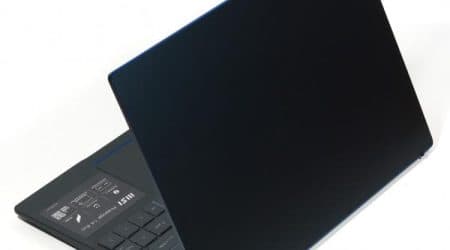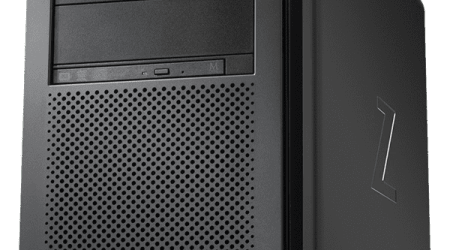In today’s fast-paced world, staying connected has become a fundamental necessity, whether for work, leisure, or communication. The ability to share an internet connection from one device to another is a valuable skill, empowering users to enhance their browsing experiences while on the go. This approach allows individuals to leverage their existing data plans to provide connectivity for multiple devices seamlessly.
Many are unaware of the straightforward methods available to transform a standard device into a source of internet access. By utilizing built-in features, users can create a network that enables laptops, tablets, or additional smartphones to access the internet effortlessly. Such a capability is especially beneficial in areas where traditional connections are unavailable or unreliable.
The process is intuitive and requires minimal technical knowledge. Once familiar with the necessary steps, individuals can enjoy the convenience of sharing their connection while on business trips, during travels, or even at home. Embracing this practice not only boosts productivity but also enhances the way we utilize modern technology in our daily lives.
Understanding Wi-Fi Hotspot Functionality
In today’s interconnected world, the capability to share internet access with multiple devices has become essential. This feature allows users to create a personal network, providing a convenient solution when traditional connections are unavailable or insufficient. Recognizing the underlying principles behind this functionality can significantly enhance overall user experience.
Basic Concept
The mechanism revolves around transforming a device into a miniature router. This process involves utilizing cellular data and distributing it wirelessly to other gadgets such as laptops, tablets, and even additional smartphones. The seamless connection ensures that users stay connected, regardless of their location.
Security Measures
Maintaining security is crucial when sharing an internet connection. Implementing robust passwords and utilizing encrypted channels safeguards user data from unauthorized access. Understanding these protective measures contributes to safe browsing practices and a more secure networking environment.
Step-by-Step Guide to Enable Hotspot
This section provides a comprehensive method for sharing internet access from your device with others. Whether for personal use or while assisting friends, the following steps will guide you through the process seamlessly.
Begin by accessing the settings menu on your device. Look for the option related to network or connectivity. It is crucial to find the section where you can manage shared connections.
Once located, select the feature that allows for internet sharing. You may see terminology such as “tethering” or “mobile data sharing.” Activate this function to proceed.
Afterward, customize the settings as desired. This includes setting a name for the connection and creating a secure password. Remember, a strong password is essential for safeguarding your shared network.
Finally, initiate the connection by enabling the feature. At this point, other devices should be able to detect your shared network and connect by entering the password you established. Enjoy seamless connectivity!
Choosing the Right Mobile Plan
Selecting an appropriate mobile plan is crucial for ensuring seamless connectivity while sharing data with others. Various options are available in the marketplace, catering to a diverse range of user needs and preferences. A thoughtful decision can significantly enhance the overall experience, making it essential to consider multiple factors before committing to a specific plan.
Firstly, assess individual data requirements. Different plans offer varying amounts of data, so identifying personal usage patterns is vital. If frequent data access is anticipated, it may be wise to opt for an unlimited or high-data allocation option. Conversely, occasional users might find smaller packages more economical.
Additionally, examining the coverage area is fundamental. Services can differ greatly depending on the carrier’s infrastructure in specific locations. Prioritize providers known for reliable signals in areas frequented, ensuring uninterrupted connectivity.
Lastly, keep an eye on promotional offers. Many carriers entice customers with attractive deals that could provide better value. However, it’s important to read the fine print to understand any long-term commitments or potential rate increases after the promotional period ends.
Optimizing Connection Speed and Stability
Achieving optimal performance for internet access through shared connections involves several strategies aimed at enhancing both speed and reliability. By implementing specific adjustments and understanding the factors that affect connectivity, users can significantly improve their experience while utilizing shared access.
Choosing the Right Bandwidth
Selecting the appropriate bandwidth is crucial for maintaining an efficient connection. Many modern devices offer both 2.4 GHz and 5 GHz frequencies. The 2.4 GHz band provides a wider range but is often congested, while the 5 GHz band offers higher speeds over shorter distances. Assess the environment and user needs to determine the best option for consistent performance.
Minimizing Interference
Environmental factors play a significant role in connection quality. Ensuring that the device sharing the network is positioned away from potential sources of interference, such as microwave ovens or large metal objects, can markedly enhance signal strength. Additionally, limiting the number of connected devices can reduce competition for resources, leading to a more stable connection.
Managing Data Usage Effectively
Controlling data consumption is crucial for maximizing the benefits of mobile connectivity. By adopting strategic practices, users can ensure that their limited resources are used wisely, preventing unexpected overages and enhancing overall experience.
Understanding Data Consumption
Recognizing which activities consume the most data is the first step towards efficient management. Common tasks include:
- Streaming videos and music
- Downloading large files
- Using video calls
- Automatic app updates
Awareness of these factors allows individuals to make informed choices about their usage.
Strategies for Reducing Data Use
There are several actionable techniques to minimize data consumption:
- Enable data-saving modes in applications when available.
- Limit streaming quality settings on media platforms.
- Update applications only when connected to a reliable network.
- Monitor background app activity and restrict it as needed.
- Download content for offline use when possible.
Implementing these methods can lead to significant reductions in overall data usage, allowing for smarter management of resources. Regularly reviewing data usage statistics can also help in adjusting habits and maintaining control.
Troubleshooting Common Hotspot Issues
Setting up a mobile connection can sometimes lead to unexpected hurdles. Identifying and resolving these challenges is essential for maintaining a seamless internet experience. Below are some frequent concerns and their potential solutions.
- Connection Problems:
- Ensure that the mobile data is enabled on the device.
- Check if the hotspot feature is activated in the settings.
- Restart the device and connected gadgets to refresh the connection.
- Slow Speeds:
- Limit the number of devices connected, as too many can slow down the service.
- Move closer to the device providing the internet signal for better reception.
- Consider reducing the data usage of connected devices if the speed drops.
- Disconnections:
- Check for software updates, as outdated systems can cause instability.
- Switch off any unnecessary applications that may drain resources.
- Keep the device away from obstructions that could interfere with the signal.
- Security Concerns:
- Always use a strong password to protect against unauthorized access.
- Change the password regularly and update network settings for added security.
- Monitor connected devices to ensure only trusted gadgets have access.
By addressing these common issues methodically, a reliable and efficient mobile connection can be maintained, ensuring users stay connected wherever they may be.
Q&A: How to turn your phone into a wi fi hotspot
To set up your Android phone as a mobile hotspot, go to Settings and tap on “Connections” or “Network & Internet,” depending on your Android device model. Select “Mobile Hotspot and Tethering,” then toggle on “Mobile Hotspot.” You can configure the hotspot name and password by tapping “Set up Mobile Hotspot.” This will allow you to create a secure Wi-Fi network that other devices can connect to. Once activated, your phone’s mobile hotspot will share your phone’s 4G or 5G data connection, allowing other devices to access the internet via Wi-Fi.
What should you consider regarding data usage and battery life when using your Android phone as a personal hotspot?
Using your Android phone as a personal hotspot can consume a significant amount of data and drain your battery life quickly, especially if multiple devices are connected. Check your phone plan to ensure it supports hotspot data and be aware of any data limits to avoid overage charges. It’s advisable to keep your phone plugged into a charger while using it as a hotspot to maintain battery life. You can also manage connected devices through your hotspot settings, allowing you to monitor usage and ensure your phone’s performance remains optimal.
How can you connect another device to your Android phone’s Wi-Fi hotspot, and what security measures should you take?
To connect another device to your Android phone’s Wi-Fi hotspot, ensure the hotspot is enabled on your smartphone. On the other device, go to the Wi-Fi menu, find your hotspot name, and enter the hotspot password you configured. For added security, create a strong password for your hotspot and avoid using public Wi-Fi hotspots when possible. Enable options like “Allow others to join” only when necessary and turn off the hotspot when not in use to protect your data and prevent unauthorized access.
What are the differences between using USB, Bluetooth, and Wi-Fi connections for tethering your Android device as a hotspot?
Tethering your Android device as a hotspot can be done through USB, Bluetooth, or Wi-Fi connections. Wi-Fi is the most common method, allowing multiple devices to connect simultaneously and is ideal for short-term internet sharing. USB tethering provides a more stable connection with faster speeds and is great for single-device use, but it requires a USB cable and reduces mobility. Bluetooth tethering uses less battery and is useful for connecting to devices like laptops or tablets but offers slower speeds compared to Wi-Fi. Each method provides a way to connect to the internet using your phone’s data, depending on the need and available resources.
To turn your Android phone into a Wi-Fi hotspot, go to your phone’s Settings and select “Connections” or “Network & Internet,” depending on your device model. Tap on “Mobile Hotspot and Tethering,” then toggle on “Mobile Hotspot.” You can set up your hotspot name and create a Wi-Fi password to secure your connection. Once activated, your phone as a hotspot will let other devices connect via Wi-Fi to access the internet using your phone’s data. This portable hotspot feature is especially useful when no other Wi-Fi is available.
What steps are needed to set up a personal hotspot on your iPhone or Android, and how do you connect other devices?
To set up a personal hotspot on your iPhone, go to Settings > Personal Hotspot and toggle it on. You can also create a Wi-Fi password for security. On Android, go to Settings > Mobile Hotspot and Tethering, and turn on the hotspot feature. Once the hotspot is active on either device, connect other devices by going to their Wi-Fi settings, tapping the hotspot name, and entering the Wi-Fi password. This allows you to share your mobile phone’s internet connection, making it easy for laptops, tablets, or other devices to connect when Wi-Fi is unavailable.
How can you quickly enable the hotspot on your Samsung Galaxy phone using Quick Settings?
On a Samsung Galaxy phone, you can quickly enable the hotspot feature using Quick Settings. Swipe down from the top of the screen to access the Quick Settings panel, then find and tap the “Mobile Hotspot” icon. If it’s your first time setting it up, you may need to configure the hotspot by creating a Wi-Fi password and setting the hotspot name. Once turned on, your phone will act as a Wi-Fi hot spot, allowing other devices to connect to the internet. This is a fast and convenient way to use your phone as a hotspot without navigating through multiple menus.
What security measures should you take when using your phone as a Wi-Fi hotspot?
When using your phone as a Wi-Fi hotspot, it’s important to secure your connection to prevent unauthorized access. Always set a strong Wi-Fi password when you set up a personal hotspot and avoid sharing it unnecessarily. Regularly check connected devices in your phone’s hotspot settings to ensure only approved devices are using your data. If you’re using your phone as a hotspot in public places, be cautious of potential security risks and avoid accessing sensitive information. These steps will help support your privacy and data security while sharing your phone’s internet connection.





